Fuel filler cap
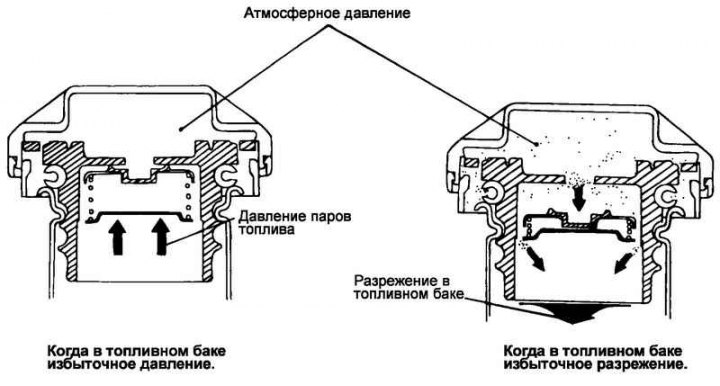
Pic. 2.227. Fuel filler cap
The fuel filler cap is equipped with a safety valve to prevent the release of fuel vapors into the atmosphere (pic. 2.227).
Removal and installation of a drive of management of giving of fuel
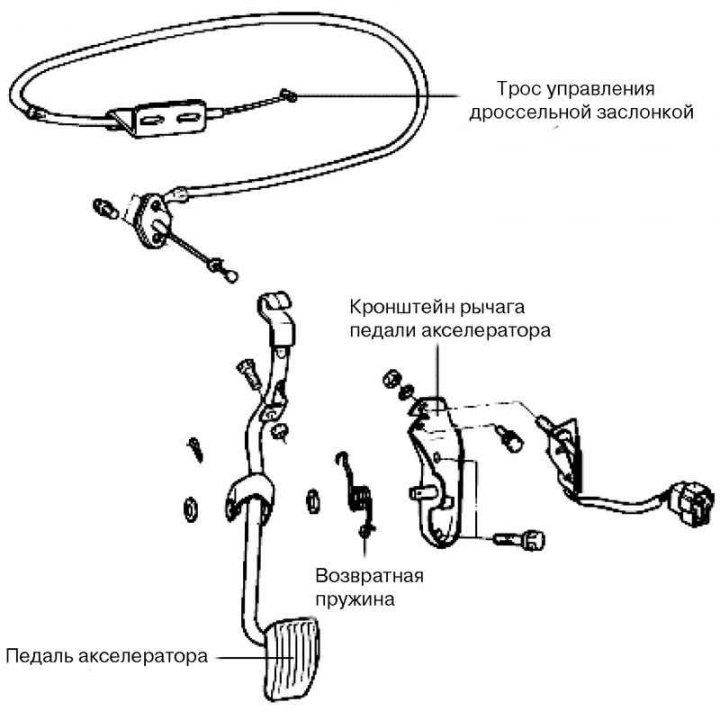
Pic. 2.228. Fuel Actuator Parts
Details of a drive of management of giving of fuel are shown on fig. 2.228.
Withdrawal
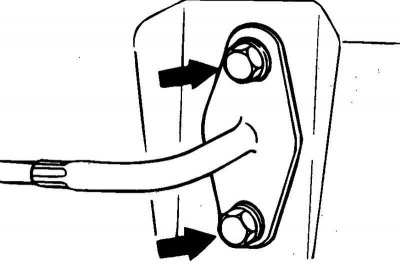
Pic. 2.229. Throttle cable bushing bolts
Remove bushing (pic. 2.229) and the inner part of the cable on the side of the accelerator pedal lever.
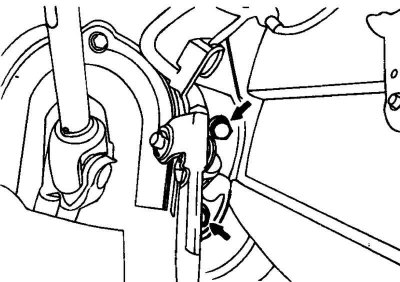
Pic. 2.230. Bolts of fastening of an arm of the lever of a pedal of an accelerator
Disconnect the accelerator pedal switch electrical connector, remove the accelerator pedal bracket mounting bolts (pic. 2.230) and remove the accelerator pedal.
Checking the technical condition
Check the inside and outside of the cable for damage.
Check the smooth movement of the cable.
Check the accelerator pedal lever for deformation.
Check the return spring for damage.
Check the connection of the sleeve to the metal holder.
Check the operation of the accelerator pedal switch.
Installation
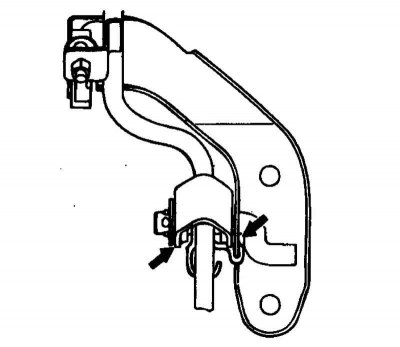
Pic. 2.231. Grease Application Points
When installing the return spring and accelerator pedal lever, apply multipurpose grease to all friction points of the lever (pic. 2.231).
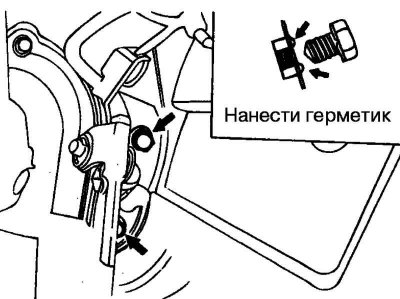
Pic. 2.232. Sealing locations (shown by arrows)
Apply sealant to the holes for the pedal arm mounting bolts (pic. 2.232) and tighten the bolts to the specified torque.
The moment of an inhaling of bolts of fastening of an arm of the lever of a pedal of an accelerator: 8–12 Н·м.
Install the plastic grommet of the throttle cable securely on the end of the pedal arm.
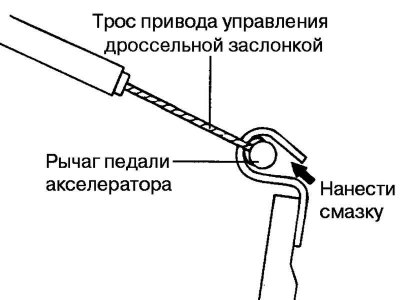
Pic. 2.233. Sealing locations (shown by arrows)
Apply multipurpose grease to the end of the cable (pic. 2.233).
Removal and installation of the fuel tank
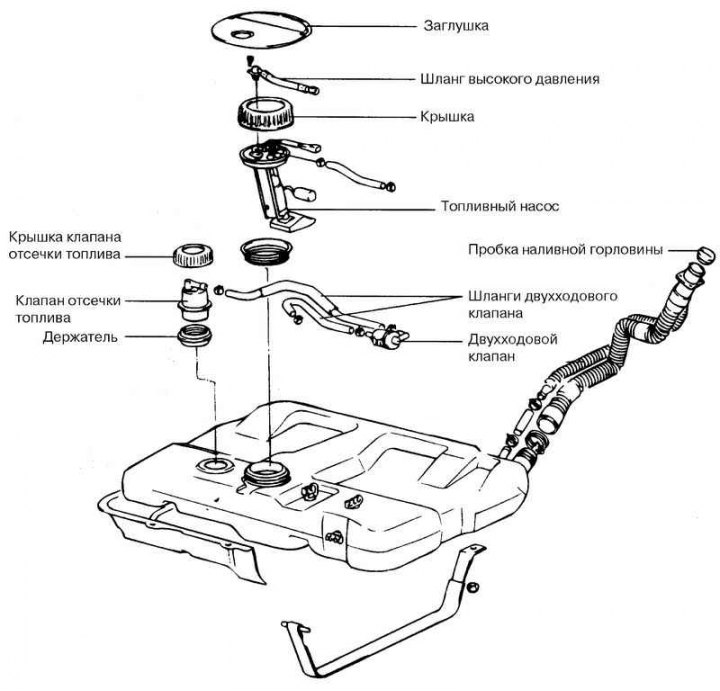
Pic. 2.234. Fuel tank
The fuel supply system consists of a fuel tank (pic. 2.234), fuel pump, fuel filter, fuel lines and fuel rail with injectors.
Fold the rear seat back onto the cushion, then fold the folded seat forward
Use a screwdriver to open the fuel pump hatch in the underbody.
To relieve pressure in the fuel lines and hoses, disconnect the electrical connector from the fuel pump, start the engine and wait until the engine has stopped.
Note. Depressurize the system before disconnecting the fuel line and hose to prevent fuel ejection.
Disconnect the wire from the negative battery terminal.
Disconnect the high pressure hose from the fuel filter outlet, disconnect the static electricity conductor.
Attention! To prevent fuel ejection due to residual pressure, cover the hose connection with a rag.
Place the car on a lift.
Disconnect the fill hose and overflow tube from the tank.
Place a jack under the tank.
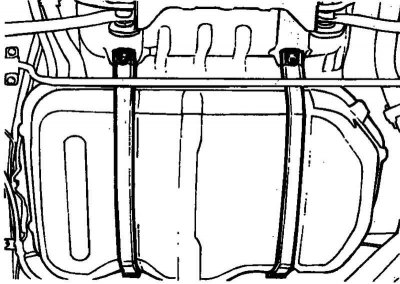
Pic. 2.235. Collars of fastening of a fuel tank to the bottom of a body of the car
Remove the clamps securing the fuel tank to the bottom of the car body (pic. 2.235).
Carefully remove the fuel tank.
Checking the technical condition
Check hoses and lines for cracks or damage.
Check the condition of the tank filler cap.
Check the fuel tank for deformation, corrosion or cracks.
Check the tank for dirt and foreign objects.
Check the internal tank filter for damage and contamination.
Check the operation of the two-way valve.
To check the on/off valve, blow lightly into it from the inlet and outlet side. If air passes after a slight resistance, the valve is OK.
Installation
Make sure the gasket is securely glued to the tank, then install the tank and tighten the self-locking clamp nuts.
Connect the overflow hose to the tank and filler neck, inserting it to a depth of about 40 mm.
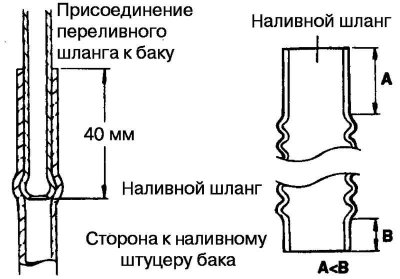
Pic. 2.236. Inlet hose connection diagram
Connect the inlet hose to the tank with its shorter, non-corrugated part (pic. 2.236).
Connect the steam hose.
Attach the high pressure hose to the fuel pump, being careful not to kink the hose.
Connect the fuel pump electrical connector.
